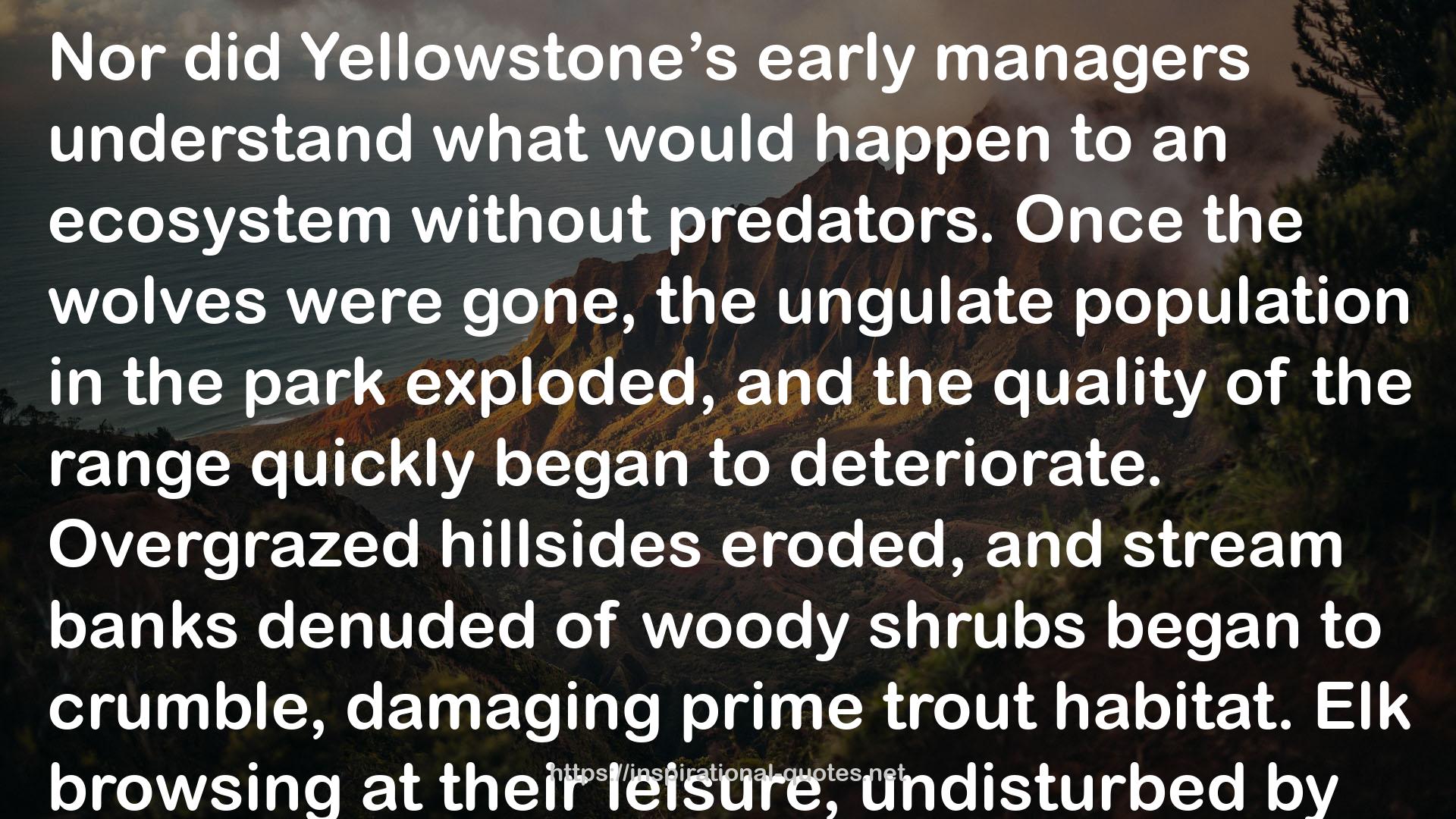" Nor did Yellowstone’s early managers understand what would happen to an ecosystem without predators. Once the wolves were gone, the ungulate population in the park exploded, and the quality of the range quickly began to deteriorate. Overgrazed hillsides eroded, and stream banks denuded of woody shrubs began to crumble, damaging prime trout habitat. Elk browsing at their leisure, undisturbed by predators, decimated stands of young aspen and willow. Too many animals on the landscape brought starvation and disease, and the elk population followed a boom-and-bust cycle. By the 1930s, Yellowstone officials had no choice but to do what they had done with the wolves. They started quietly culling the park’s enormous elk herds, shooting thousands of animals in an average year (usually in the winter, when few visitors were around to see the carnage). This continued until the 1960s, when hunters in areas adjacent to the park pressured their elected officials to intervene. Fewer elk in Yellowstone, they knew, meant fewer elk migrating out of the park in winter, which in turn meant fewer hunting opportunities. The elk population was once again allowed to grow untrammeled. "
― , The Wolf: A True Story of Survival and Obsession in the West
